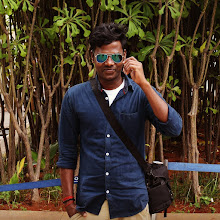INFORMATION :
he saying, "What's in the past, should stay in the past" - doesn't work here.
We might already have an idea of what Yoga is but to understand it better, we have to know what it has become as well as its roots and beginnings. A quick look at the history of Yoga will help us appreciate its rich tradition and who knows, it might help us incorporate Yoga into our lives.
Although Yoga is said to be as old as civilization, there is no physical evidence to support this claim. Earliest archaeological evidence of Yoga's existence could be found in stone seals which depict figures of Yoga Poses. The stone seals place Yoga's existence around 3000 B.C.
We might already have an idea of what Yoga is but to understand it better, we have to know what it has become as well as its roots and beginnings. A quick look at the history of Yoga will help us appreciate its rich tradition and who knows, it might help us incorporate Yoga into our lives.
Although Yoga is said to be as old as civilization, there is no physical evidence to support this claim. Earliest archaeological evidence of Yoga's existence could be found in stone seals which depict figures of Yoga Poses. The stone seals place Yoga's existence around 3000 B.C.
Scholars,
however, have a reason to believe that Yoga existed long before that
and traced its beginnings in Stone Age Shamanism. Both Shamanism and
Yoga have similar characteristics particularly in their efforts to
improve the human condition at that time. Also, they aim to heal
community members and the practitioners act as religious mediators.
Though we know Yoga as focusing more on the self, it started out as
community-oriented before it turned inward.
For a better discussion of the history of Yoga, we could divide it into four periods: the Vedic Period, Pre-Classical Period, Classical Period, and Post-Classical Period.
For a better discussion of the history of Yoga, we could divide it into four periods: the Vedic Period, Pre-Classical Period, Classical Period, and Post-Classical Period.
The existence of the Vedas marks this period. The Vedas is the sacred
scripture of Brahmanism that is the basis of modern-day Hinduism. It is a
collection of hymns which praise a divine power. The Vedas contains the
oldest known Yogic teachings and as such, teachings found in the Vedas
are called Vedic Yoga. This is characterized by rituals and ceremonies
that strive to surpass the limitations of the mind.
During this time, the Vedic people relied on rishis or dedicated Vedic Yogis to teach them how to live in divine harmony. Rishis were also gifted with the ability to see the ultimate reality through their intensive spiritual practice. It was also during this time that Yogis living in seclusion (in forests) were recorded.
During this time, the Vedic people relied on rishis or dedicated Vedic Yogis to teach them how to live in divine harmony. Rishis were also gifted with the ability to see the ultimate reality through their intensive spiritual practice. It was also during this time that Yogis living in seclusion (in forests) were recorded.
Eight Limbs of Yoga:
The Classical Period is marked by another creation - the Yoga Sutra. Written by Patanjali around the second century, it was an attempt to define and standardize Classical Yoga. It is composed of 195 aphorisms or sutras (from the Sanskrit word which means thread) that expound upon the Raja Yoga and its underlying principle, Patanjali's Eightfold path of Yoga (also called Eight Limbs of Classical Yoga). These are:
- Yama, which means social restraints or ethical values;
- Niyama, which is personal observance of purity, tolerance, and study;
- Asanas or physical exercises;
- Pranayama, which means breath control or regulation;
- Pratyahara or sense withdrawal in preparation for Meditation;
- Dharana, which is about concentration;
- Dhyana, which means Meditation; and
- Samadhi, which means ecstasy.
Patanjali believed that each individual is a composite of matter
(prakriti) and spirit (purusha). He further believed that the two must
be separated in order to cleanse the spirit - a stark contrast to Vedic
and Pre-Classical Yoga that signify the union of body and spirit.
Patanjali's concept was dominant for some centuries that some Yogis focused exclusively on Meditation and neglected their Asanas. It was only later that the belief of the body as a temple was rekindled and attention to the importance of the Asana was revived. This time, Yogis attempted to use Yoga techniques to change the body and make it immortal.
Patanjali's concept was dominant for some centuries that some Yogis focused exclusively on Meditation and neglected their Asanas. It was only later that the belief of the body as a temple was rekindled and attention to the importance of the Asana was revived. This time, Yogis attempted to use Yoga techniques to change the body and make it immortal.












.jpg)

0 comments:
Post a Comment